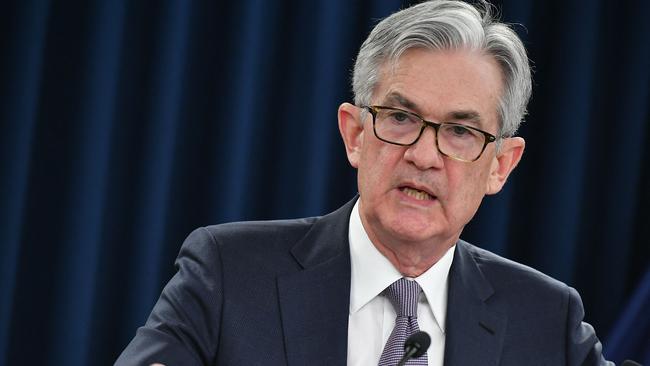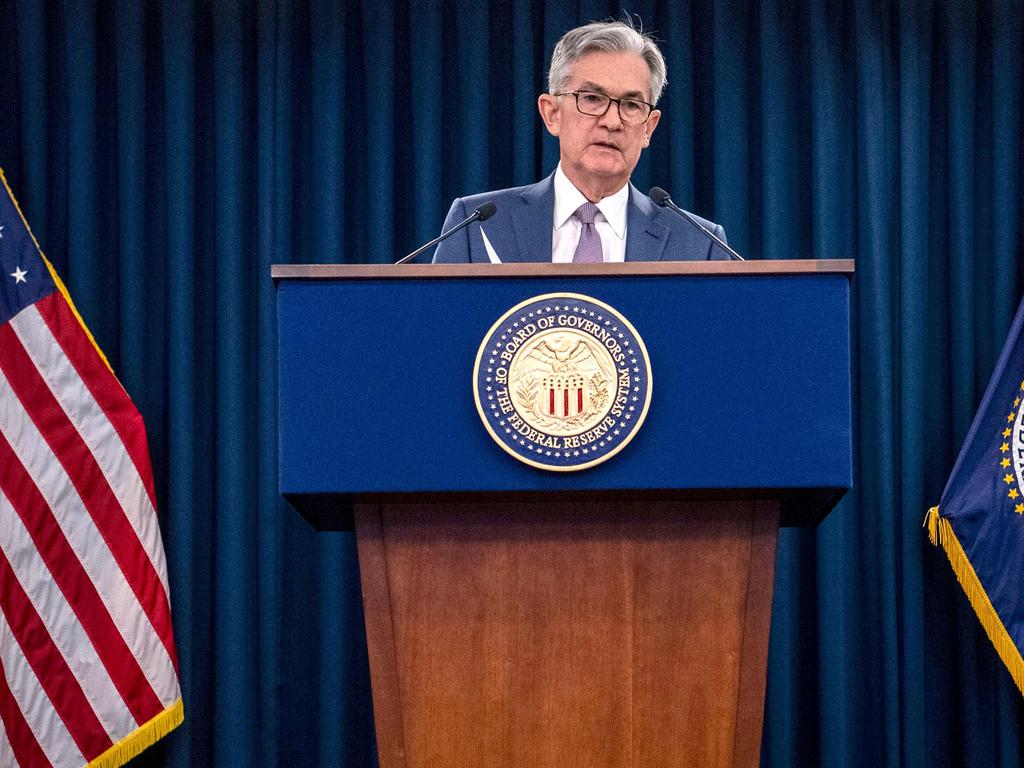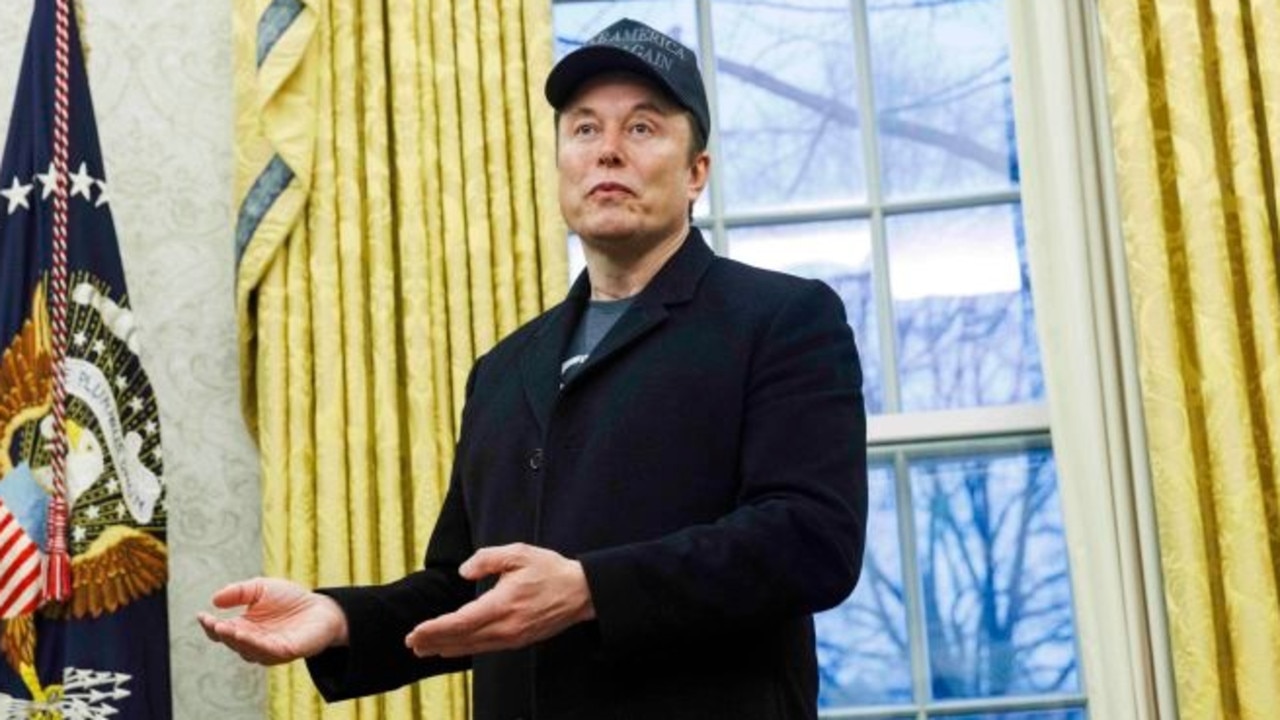Fed holds steady on interest rates, bond purchases
Most officials expect to hold rates near zero through 2023, while also expecting recovery to gain steam.

The Federal Reserve kept its easy-money policies in place and vowed to maintain them until the US economy recovers further from the effects of the coronavirus pandemic, while officials also highlighted an improved outlook for growth.
“We will continue to provide the economy the support that it needs for as long as it takes,” Fed Chairman Jerome Powell said at a press conference Wednesday after the conclusion of a two-day policy meeting.
Central bankers voted unanimously to maintain overnight interest rates near zero, where they have been set for the past year, and to continue purchasing at least $US120bn of Treasury bonds and mortgage-backed securities monthly. Mr Powell said the measures “will ensure that monetary policy will continue to deliver powerful support to the economy until the recovery is complete.”
Fed officials expect the economy to recover more quickly than they did a few months ago, according to new projections released Wednesday. They sharply raised their forecasts for economic growth and inflation, anticipating that the COVID-19 vaccination campaign and trillions of dollars of fiscal stimulus will propel the US economy to its fastest expansion since the early 1980s.
Even so, most Fed officials still expect to maintain ultralow interest rates through 2023. Just seven of 18 policy makers at Wednesday’s meeting anticipate lifting rates in 2022 or 2023, up from five in December.
Stocks rose and the yield on the 10-year Treasury note fell after the Fed released its policy statement and projections. The S&P 500 added 0.3 per cent, and the Dow Jones Industrial Average climbed 0.6 per cent. The tech-heavy Nasdaq Composite advanced 0.4 per cent, reversing losses earlier in the session.
“Corporate profits, sales revisions, forward guidance, and earnings surprises are all showing signs of an impending (and still underappreciated) economic boom,” said Rick Rieder, chief investment officer of global fixed income at BlackRock. “Although markets will gyrate with every word from Fed officials in coming months, the fact is that the Fed has a great deal of flexibility in how it unwinds accommodation.”
Mr Powell said the forecasts underscore the central bank’s commitment to achieving its goals of maximum employment and sustained 2 per cent inflation.
After a decade of inflation largely running below that target, policy makers last year decided to end their longstanding strategy of pre-emptively lifting interest rates to head off higher inflation. Instead, the Fed now seeks “inflation moderately above 2 per cent for some time” to compensate for the past shortfall before it will consider raising rates.
Officials haven’t said exactly how long they would allow inflation to run above 2 per cent, or how high they would allow it to rise. But their median forecast now shows annual inflation accelerating to 2.4 per cent in the fourth quarter of this year, up from their December projection of 1.8 per cent, and remaining at or slightly above 2 per cent through 2023.
They also expect US gross domestic product to expand 6.5 per cent in 2021, measured from the fourth quarter of last year to the same period of this year, the fastest such pace since 1983 and up from their December forecast of 4.2 per cent.
The Fed’s updated forecasts reflect recent developments including the $US1.9 trillion stimulus package signed into law by President Biden last week. Some economists worry that an impending surge of consumer spending could strain businesses’ ability to meet demand, causing prices to jump.
Mr Powell said Wednesday that any pick-up in prices this year will likely be temporary. He added that a transitory increase wouldn’t meet the Fed’s bar for raising rates.
‘“He’s really just trying to hold the line and say that there’s essentially nothing to see here with respect to inflation,” said Jeremy Stein, a former Fed governor who heads the economics department at Harvard University. “They’re treading very carefully.”
The Fed in a statement reiterated its plan to continue buying at least $US120bn a month of Treasury debt and mortgage-backed securities until “substantial further progress” is made in the recovery. Mr Powell said it will take “actual progress, not forecast progress,” to convince the Fed to change tack.
“The economy is a long way from our employment and inflation goals, and it is likely to take some time for substantial further progress to be achieved,” Mr Powell said.
The labour market has strengthened this year. Employers added 379,000 jobs in February, up from January’s gains and December’s decline. The unemployment rate edged down to 6.2 per cent last month from 6.3 per cent in January, though it is still well above the 3.5 per cent level of February 2020, just before the pandemic hit the economy.
US retail sales fell 3 per cent in February after jumping 7.6 per cent in January, when households started receiving the stimulus payments approved by Congress and the White House in December. Retail sales were up 6 per cent over the past three months compared with the same period a year ago, according to the Commerce Department.
Partly reflecting the improving economic outlook, yields on 10-year Treasury notes, which affect long-term borrowing costs for businesses and households, have surged in recent weeks to the highest level since February 2020 — before the pandemic hit the US economy. Rates on 30-year mortgages rose above 3 per cent this month for the first time since July. “The Fed has displayed a hint of optimism for the first time in a year,” said Diane Swonk, chief economist at Grant Thornton, in a note to clients. Fed officials “will not act, however, on optimism alone. The Fed needs to ‘see’ a major improvement in the economy and a persistent overshoot on inflation to prompt it to actually pull the trigger and raise rates.”
The Wall Street Journal





